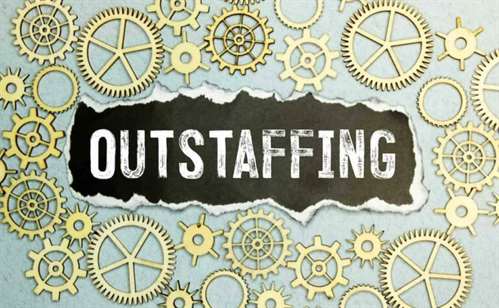Content
There will always be configuration and personalization, which every ERP implementation requires, but when it comes to heavy-duty changes to the software, most executives don’t want to hear about it. The hybrid model is initially less expensive than fully customized software because a lot of the development work has already been done. Since ERP systems cover all of a company’s work, they’re large and complicated.
An ERP is usually a set of modules that handle specific functions. After you figure out what your exact requirements are, the process of searching for the perfect ERP system will become much easier for you to do. CEO Doug Leeby avoids mandating office returns and is planning a … When it came time to move from SAP ECC to S/4HANA Cloud, Jabil chose to lift-and-shift systems in stages. Data stewardship and distributed stewardship models bring different tools to data governance strategies.
SaaS ERP customization vs. out of the box: Pros, cons
Otherwise, you risk missing important points and hampering your optimization efforts. The second type covers the ERPs that are built to the specifications of the customer that ordered them. This software is owned by the customer and thus require no licensing payments. Such ERPs can be changed and modified whenever the customer wants — this is the whole point. Being a system capable of servicing an entire enterprise, you might think that an ERP is only worth it if you want an extensive management system.

Once the ERP is integrated, its benefits do not show up on day one. However, from the ong-term perspective, the efficiency and effectiveness of the system become more and more viable and can later be compared to previous performance. An ERP solution can aid in regulatory compliance while maintaining perfect accuracy with records and reporting. For most businesses, this is exceptionally important in the financial scope. Periodic and repetitive tasks, such as reports, claims, follow-ups and many others can be done with minimal use of resources and make the tasks more productive. The system is also tested to ensure it is configured correctly and can handle the load.
Five Common ERP Implementation Pitfalls to Avoid for a Successful Digital Transformation
Stay current on all things Clarity with posts about our solutions and general Clarity news. Of course, a developer worth its salt will work with the business to ensure they’re getting what they pay for. This also means that you’ll be able to keep adjusting and adding new features to further personalize the software. Despite some of the challenges that exist with custom erp development ready-made software, there are some positive aspects of using such platforms that we can’t ignore. The updates let Google Chrome users alter PDF documents by adding comments, markups, highlights, signatures and image cropping … Security is critical to SAP customers, and third-party tools can help seek out and monitor vulnerabilities in areas that SAP …

In fact, these are only a few of the many advantages of ERP software. A properly designed and correctly integrated solution can bring a bunch of other improvements such as, customer service, collaboration https://globalcloudteam.com/ and workflow, campaign planning and forecasting, competition and many more. BairesDev has the necessary financial expertise to build an ERP that helps you achieve all of those things.
Business Management Consulting
Cloud ERP also often delivers better performance and can guarantee uptimes. For instance, cloud ERP solution like Dynamics 365 Business Central has a guaranteed uptime of 99.9% and a robust disaster recovery plan. Microsoft also invests heavily in data security research and development to ensure your system is secure. This fundamental difference of deployment also impacts how cloud and on-premises ERP solutions are typically priced.

With bespoke and off-the-shelf software offering their own unique advantages in a range of different situations, it may be that your ideal solution combines elements of both development approaches. Customization may be a symptom of organizational change management issues. Often times, it isn’t the customization itself that is the problem. Instead, it is merely a symptom that the organization doesn’t want to adopt new business processes and software functionality.
Integrations
If you’re a startup or a smaller business and your budget is limited, consider outsourcing your ERP development to programmers in Ukraine, Belarus, or India. They frequently offer lower prices than developers in North America and Western Europe and can guarantee an excellent product in the end. However, you can’t be certain that every third-party service can be added. By choosing custom development, you ensure that any additional tools which your business needs, will be integrated in the system. And while it sounds great, this may also make the code heavier and negatively influence the performance.
After that’s done, we monitor its use to deal with any potential bugs that appear post-launch. We also work with you to expand the ERP’s functionality and update it whenever needed. That doesn’t mean you should only rely on off-the-shelf software, but it does mean you need to be careful about going down a customization rabbit hole. Establish objectives, and once you’ve met them, avoid the temptation of continuing to add unnecessary features.
Disadvantages of Customizing an ERP System
Therefore, companies still need to adapt to the environment of the systems, which can affect the overall business model and its performance. Customized solutions are already a significant investment, but you should also be aware of the software integration and maintenance costs. It’s likely to involve add-on IT profiles, ERP consultants and even costs for software training specialists to maintain stable ERP performance over the long term. However, before you consider integrating this software solution into your business, it’s critical to evaluate its pros and cons to see its overall impact on your business performance. The only difference is that the MVP-first approach lends itself better to incremental implementation. The turnkey ERP development company won’t force you to adapt to its practices in either software or hardware — tailoring the system to the client’s needs is the whole point of custom ERPs.
- This requires business change management, people need to be motivated to work differently.
- Custom software can be easily modified and expanded, keeping in-step with your business as it, and technology, morphs and changes over years.
- Panorama’s Expert Witness team was retained to provide a forensic analysis and written report to the court regarding the failed implementation of a major software developer’s ERP/payroll system.
- The OOTB-box approach represents many of these best practices and therefore are a safe path to follow.
- It is up to you to decide whether an out-of-the-box software can be customized enough to work for your business or if you need a truly customized solution.
- The software is getting improved, the bugs are fixed, and you get to reap the rewards.
